The shoulder is one of the most mobile and complex joints in the human body. Its impressive range of motion allows us to reach, lift, throw, and perform countless other daily activities. But with this mobility comes vulnerability—particularly when it comes to shoulder instability. To better grasp how the shoulder functions—and why things sometimes go wrong—it helps to understand the key components that make up this intricate joint.
The Bones of the Shoulder
At its foundation, the shoulder is a ball-and-socket joint composed of three main bones:
- Humerus: The upper arm bone, whose rounded head fits into the socket.
- Scapula: Also known as the shoulder blade, it contains the glenoid, the shallow socket that receives the humerus.
- Clavicle: The collarbone, which connects the shoulder to the sternum and helps stabilize the joint.
The interaction between these bones is what gives the shoulder its wide range of movement. However, this same flexibility makes the joint inherently less stable than others, like the hip.
Muscles That Move and Stabilize
Surrounding the shoulder bones is a robust network of muscles that not only move the joint but also help stabilize it.
The Rotator Cuff
The most well-known group is the rotator cuff, a set of four muscles and their tendons:
- Supraspinatus
- Infraspinatus
- Teres Minor
- Subscapularis
These muscles play a vital role in rotating and lifting the arm and in keeping the head of the humerus firmly within the socket.
Deltoid and Other Supporting Muscles
The deltoid muscle covers the shoulder and is primarily responsible for lifting the arm. Other important muscles include:
- Trapezius
- Rhomboids
- Serratus Anterior
- Latissimus Dorsi
Together, they coordinate to keep the shoulder functioning smoothly during complex movements.
Tendons and Their Role
Tendons are the fibrous tissues that connect muscles to bones. In the shoulder, tendons of the rotator cuff muscles and the long head of the biceps are particularly important. These tendons can be prone to wear and tear, especially with overuse or aging.
Injuries to the rotator cuff tendons—such as tears or inflammation—can severely impair shoulder movement and cause pain, contributing to instability if not properly managed.
Ligaments: The Stabilizing Cables
Where muscles provide motion and tendons act as connectors, ligaments serve as the strong bands that hold bones together. In the shoulder, key ligaments include:
- Glenohumeral Ligaments: These stabilize the joint capsule and prevent dislocations.
- Coracohumeral Ligament: Helps support the humerus within the glenoid socket.
- Coracoacromial Ligament: Forms a protective arch over the top of the shoulder.
Although these ligaments are tough, they can be stretched or torn during injuries, leading to instability and recurring dislocations.
The Labrum: The Shoulder’s Cartilage Rim
Inside the glenoid socket lies the labrum, a ring of cartilage that deepens the socket and enhances joint stability. Damage to the labrum—commonly from trauma or repetitive motion—can lead to pain and a feeling of the shoulder “slipping” out of place.
How These Parts Work Together
The shoulder functions like a well-orchestrated machine. The bones provide the framework, the muscles and tendons generate movement, the ligaments provide restraint, and the labrum adds depth and cushioning. When all these elements are in harmony, the shoulder operates smoothly. But when any component is compromised, problems like pain, weakness, or dislocation can arise.
Understanding the basics of this anatomy can empower patients to make better decisions about their shoulder health, whether they’re managing an injury, undergoing rehab, or simply trying to prevent issues down the line.
Frequently Asked Questions
1. What is the most common cause of shoulder pain?
Most shoulder pain originates from overuse, rotator cuff injuries, or tendon inflammation (tendinitis).
2. What’s the difference between a tendon and a ligament?
Tendons connect muscle to bone, while ligaments connect bone to bone.
3. How does the rotator cuff affect shoulder stability?
The rotator cuff keeps the humeral head centered in the glenoid socket, providing dynamic stability during movement.
4. What happens when the labrum is torn?
A torn labrum can lead to reduced stability, pain, and clicking or catching sensations during shoulder movement.
5. Can strengthening muscles improve shoulder instability?
Yes, targeted physical therapy can strengthen the rotator cuff and surrounding muscles, which helps support and stabilize the joint.
